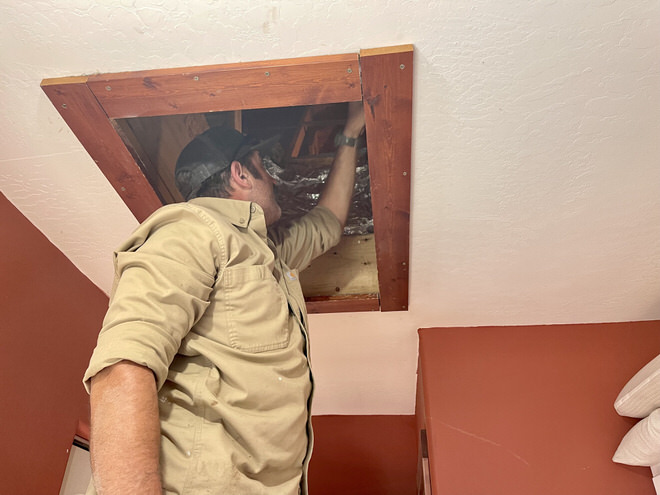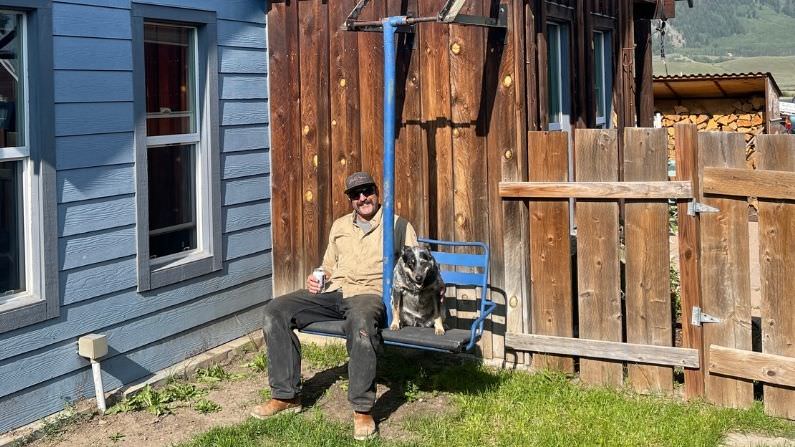This story is part of a collaboration between Rocky Mountain Community Radio and the Solutions Journalism Network highlighting affordable housing solutions across the Mountain West.
Sometimes it’s called home rehabilitation or an energy upgrade or a retrofit. We’ll call it weatherization. Details vary, but the basic idea is to use government money to pay for energy upgrades to homes. It’s money well spent, according to the Biden administration.
The president’s infrastructure plan calls for $213 billion for weatherization efforts. That could be of good use in the town of Crested Butte, Colorado, where a pandemic-boosted economic crisis has housing at its center. By the end of the summer, this tourist town had an estimated 15% of jobs go unfilled, and local officials fear the fall and winter could be worse.
“I think it’s a very tight rope for this community to function. And we’re missing it,” said Troy Russ, community development director in Crested Butte.
Russ breaks the cost of living into three categories: Transportation, basic essentials and housing.
”And that would include the cost of energy towards housing,” he said.
At 8,000 feet, Crested Butte and its surrounding communities can get cold in the winter—very cold.
“What we’re finding is the housing costs are simply dominating the budget. So, there’s no savings going on. There’s very little insurance. And it’s really skewing people’s ability to live here,” Russ said.
That’s a familiar story to Josh Schumacher, who used to be a chairlift mechanic but now “fixes rich people’s toilets.”
“I’m not good at budgeting,” he said.
Schumacher moved to Crested Butte in the 90s and said that recently, more and more of his peers are being priced out while he’s figured out ways to stick around. That includes owning a deed-restricted house, which made him eligible for the town’s Greendeed Weatherization Program.

Josh Schumacher admires new insulation in his attic courtesy of the Greendeed program. (Christopher Biddle/KBUT)
Through Greendeed, Schumacher scored a new refrigerator and a fresh layer of insulation in his attic. As winter approaches, he’s hoping the upgrades will provide some relief to an electric bill that’s broken $900 in the past.
“I’m kind of like a lot of people here. I live virtually paycheck to paycheck still. You know, I make enough to where I can put a little aside,” Schumacher said.
Gesa Michel designed the Greendeed program, as well as a similar, county-wide effort for income-qualified homes called Gunnison Valley Heat (GVHEAT). Studies show that lower-income households usually put more of their money towards energy costs, which means they often get a better return on their upgrades. Last year, GVHEAT saved an average of just over $460 per household.
“We have an income gap, a serious income gap. We have a serious resiliency gap. And that’s what I’m trying to help with,” Michel said.
But individual savings are often seen as just a secondary benefit to weatherization. Crested Butte adopted the program originally as part of its climate action plan, and the Biden administration says targeted weatherization efforts will offset racial and economic divides and boost quality of life for the poorest Americans.
With all those benefits, you’d think the idea would have taken off already, but according to the Brookings Institute, only 2% of the nearly 40 million eligible American homes are actually weatherized every year.
Biden’s plan will most likely provide some boost, and then people like Michel still have to figure out how to spend the money. But she’s probably already got a plan.
“You can’t only just throw funding at something, you also need to build capacity,” Michel said.
Hard as it is to hire in any American industry right now, weatherization programs across the country have struggled for years. In another very cold place, veteran non-profit Efficiency Vermont turned from contracting to hiring and training its own workforce.
For projects in Gunnison and Crested Butte, where new construction dominates the attention of the workforce, Michel has to hire a team from the Alamosa Energy Resource center some four hours away.
Schumacher showed off his upgrades to KBUT on a Thursday, but he’s all Friday vibes, packing his truck for a camping trip. In the glow of the evening sun, it’s obvious that Schumacher, fixer of rich people’s toilets, enjoys a high quality of life.
“I’ve moved up the food chain as far as where I’m at financially. But it’s good,” he said. “I don’t want to say comfortable, but I’m finally paying my bills with something left over so I can actually enjoy life.“
For Schumacher, a government-sponsored weatherization program was part of that puzzle, and something that may soon be available to many more Americans trying to get by.






